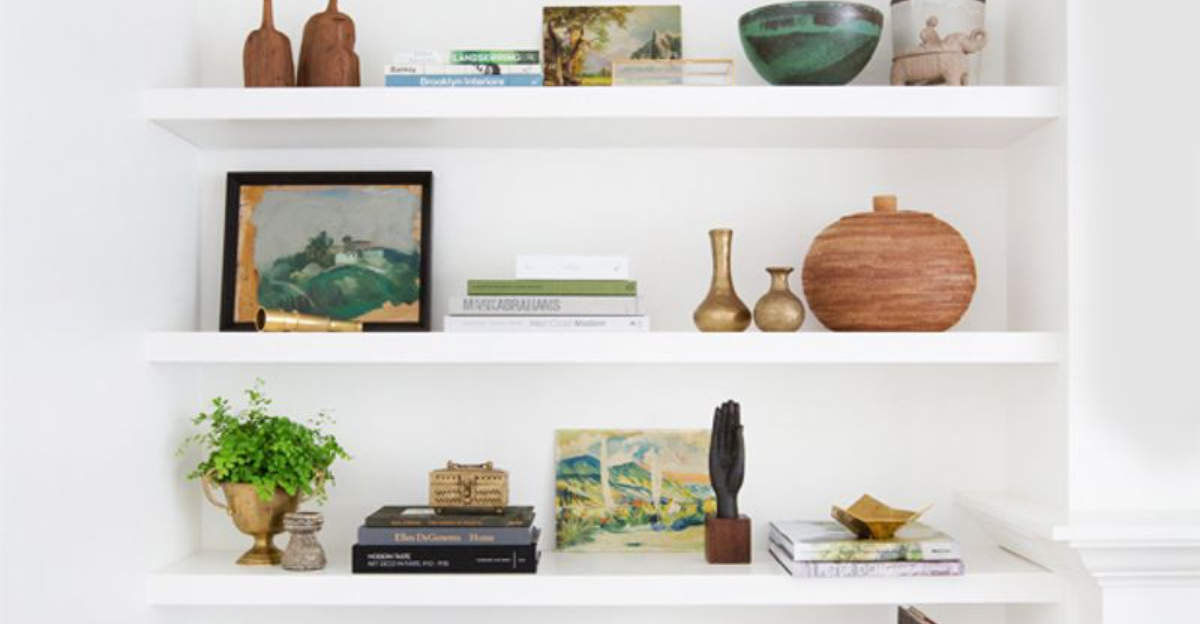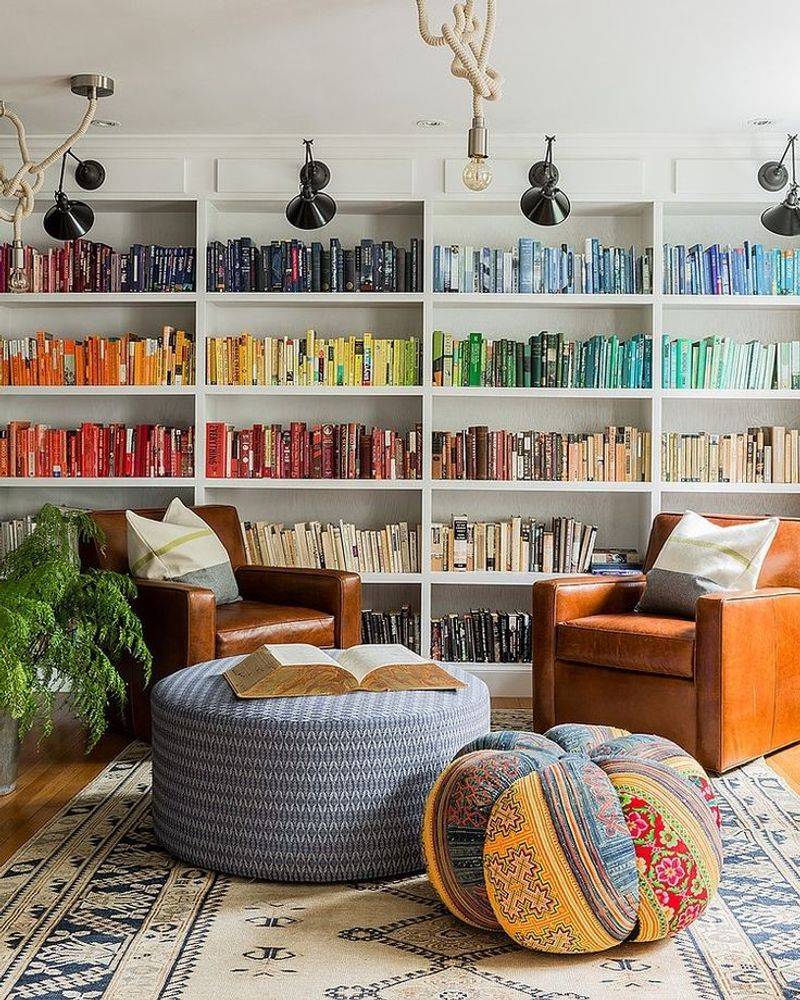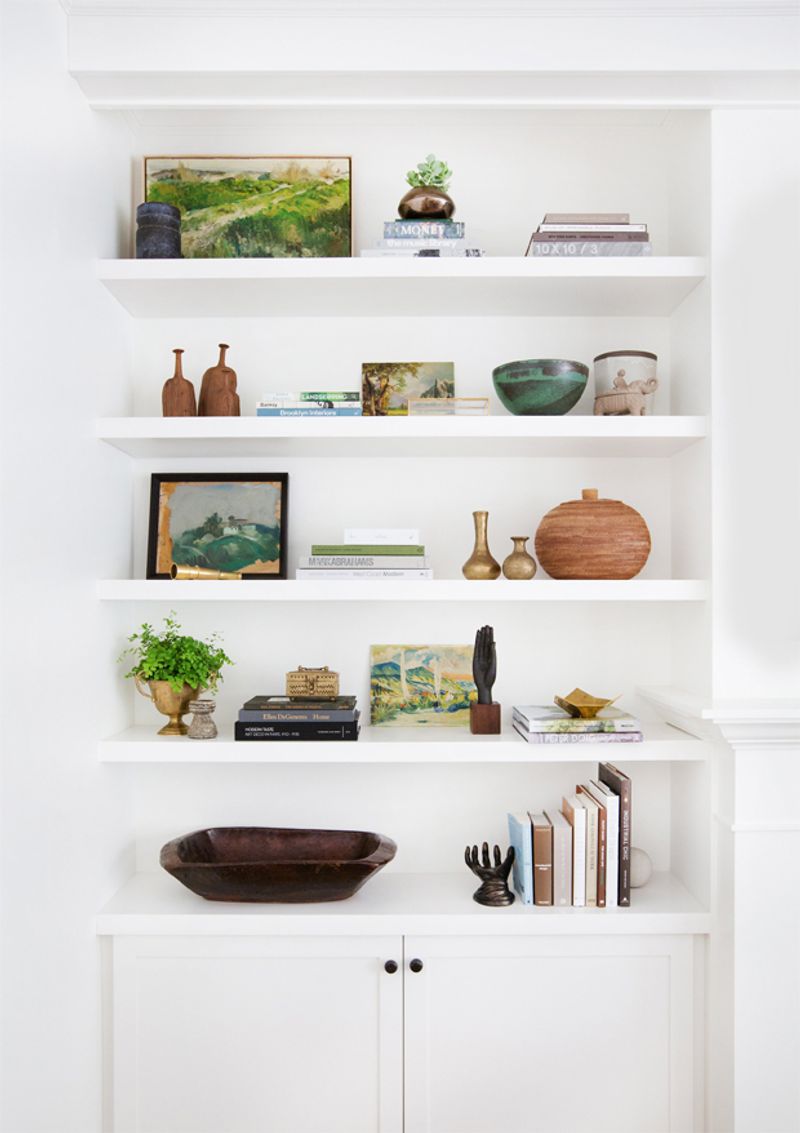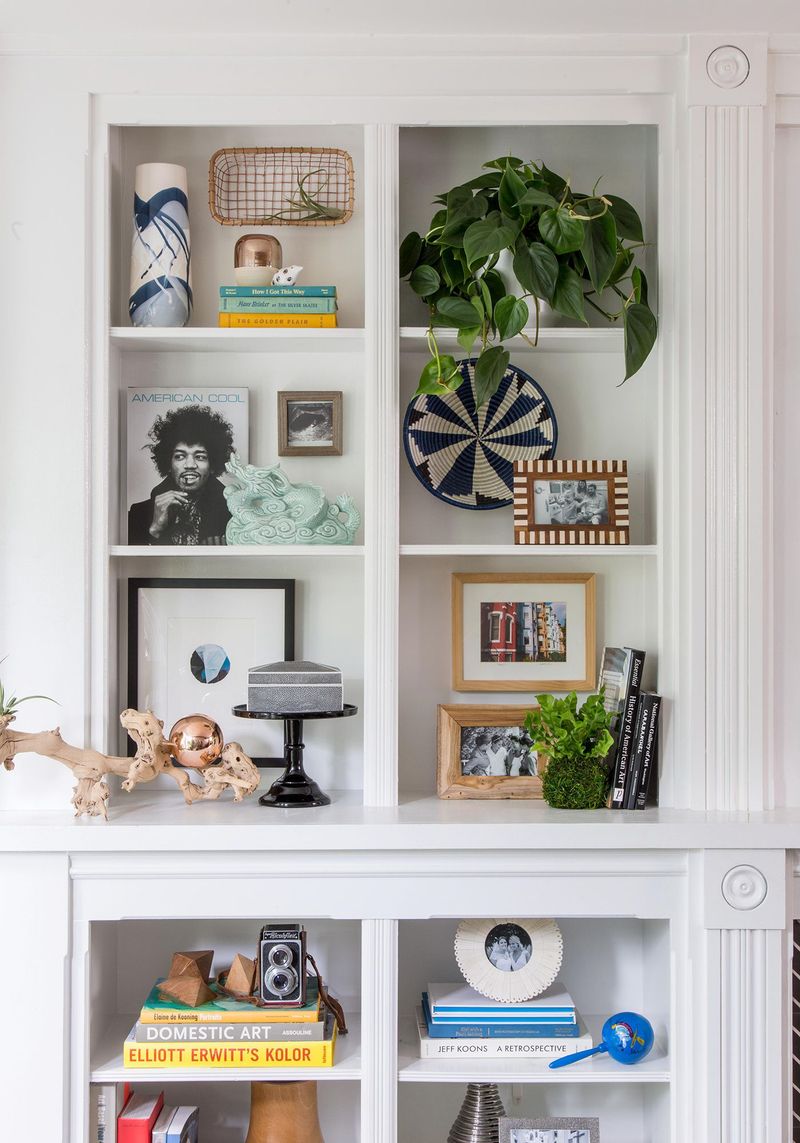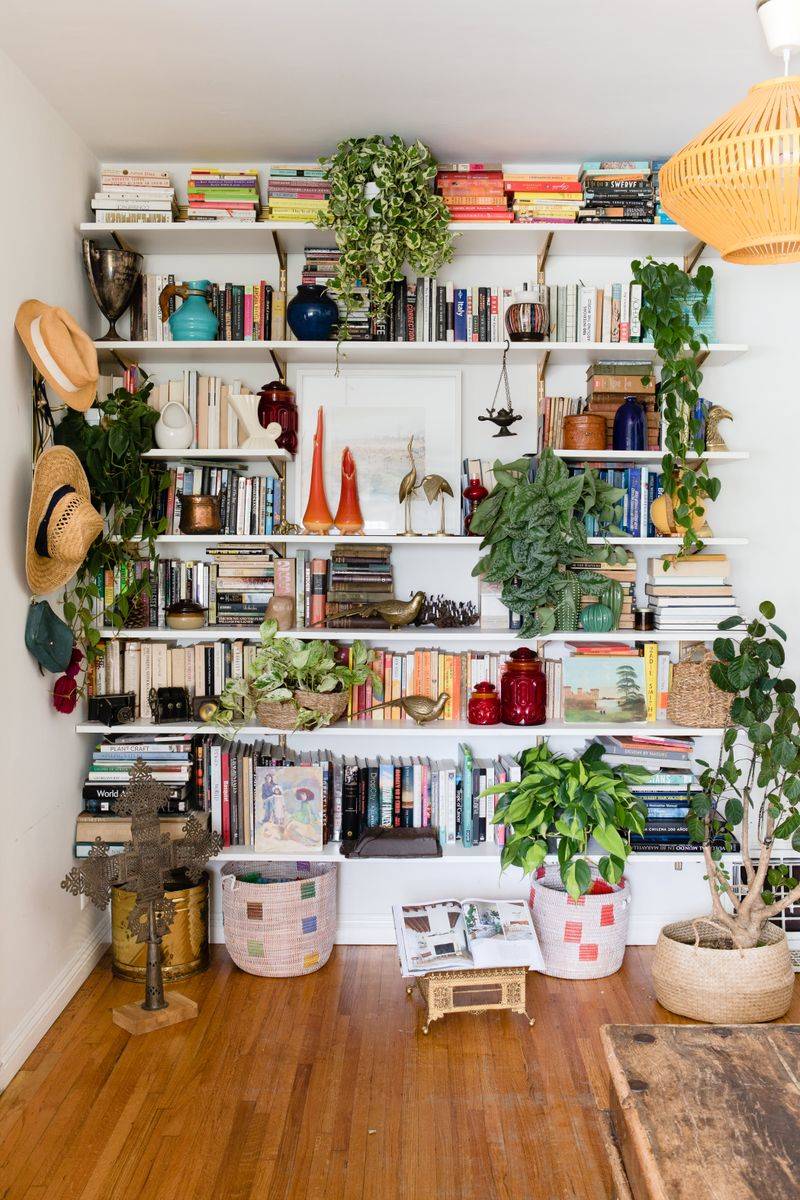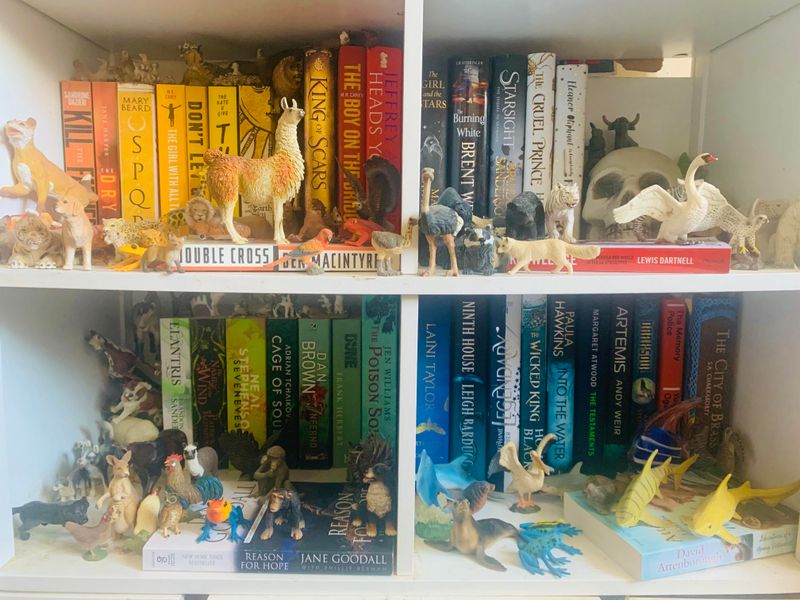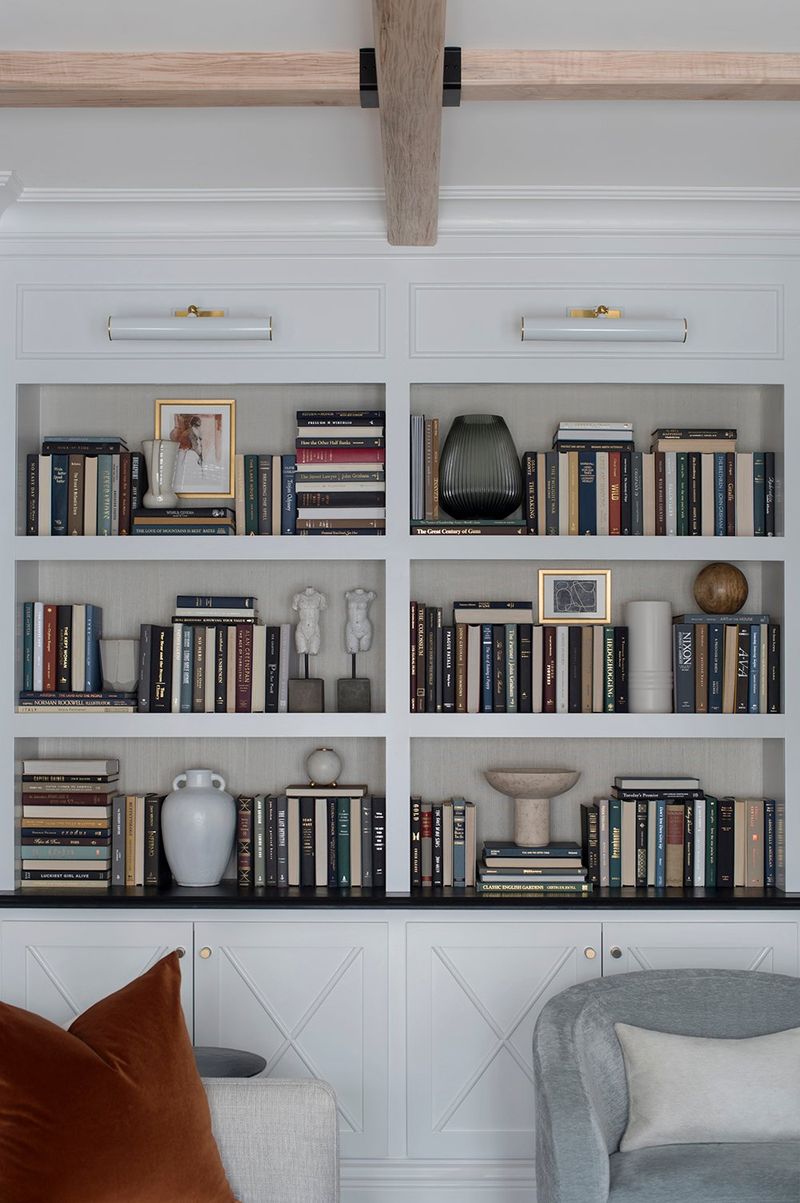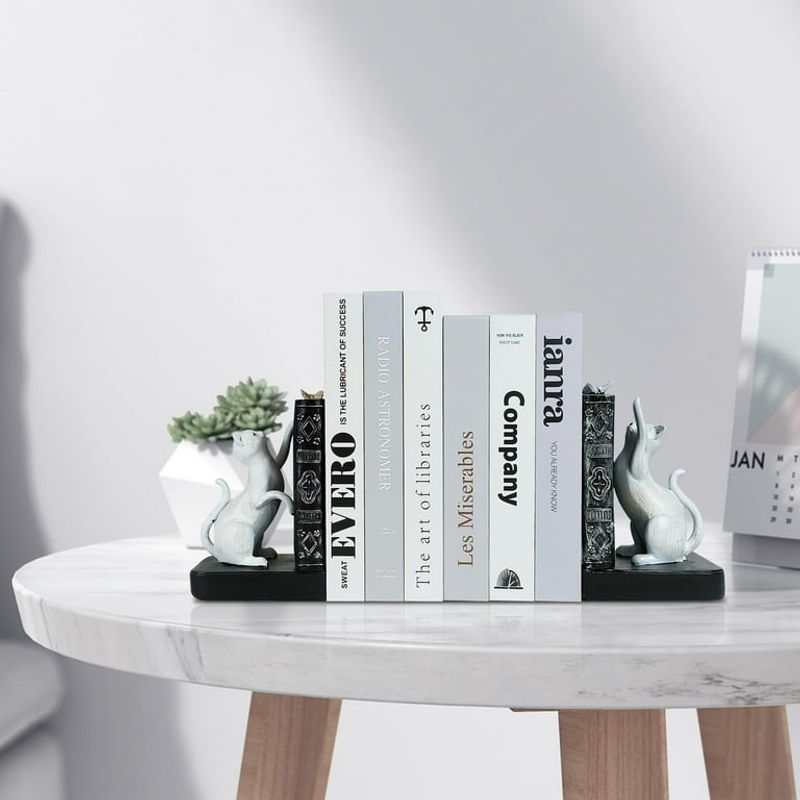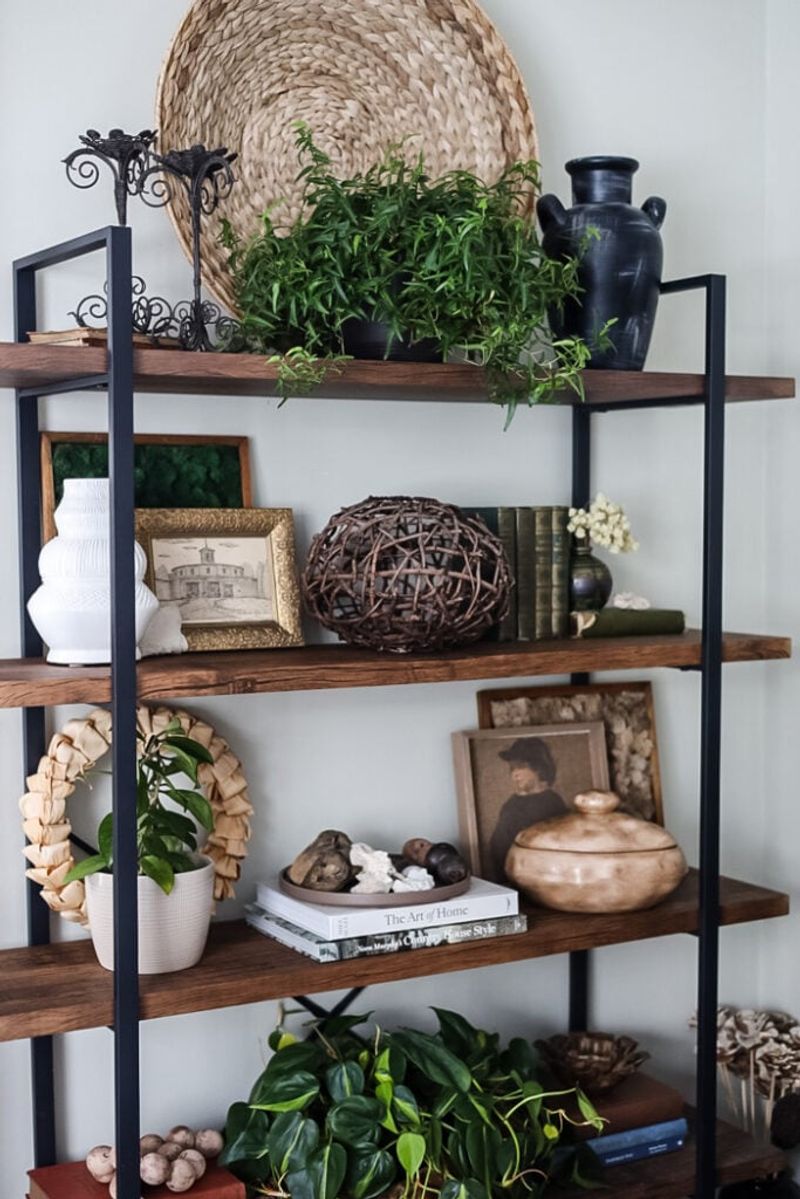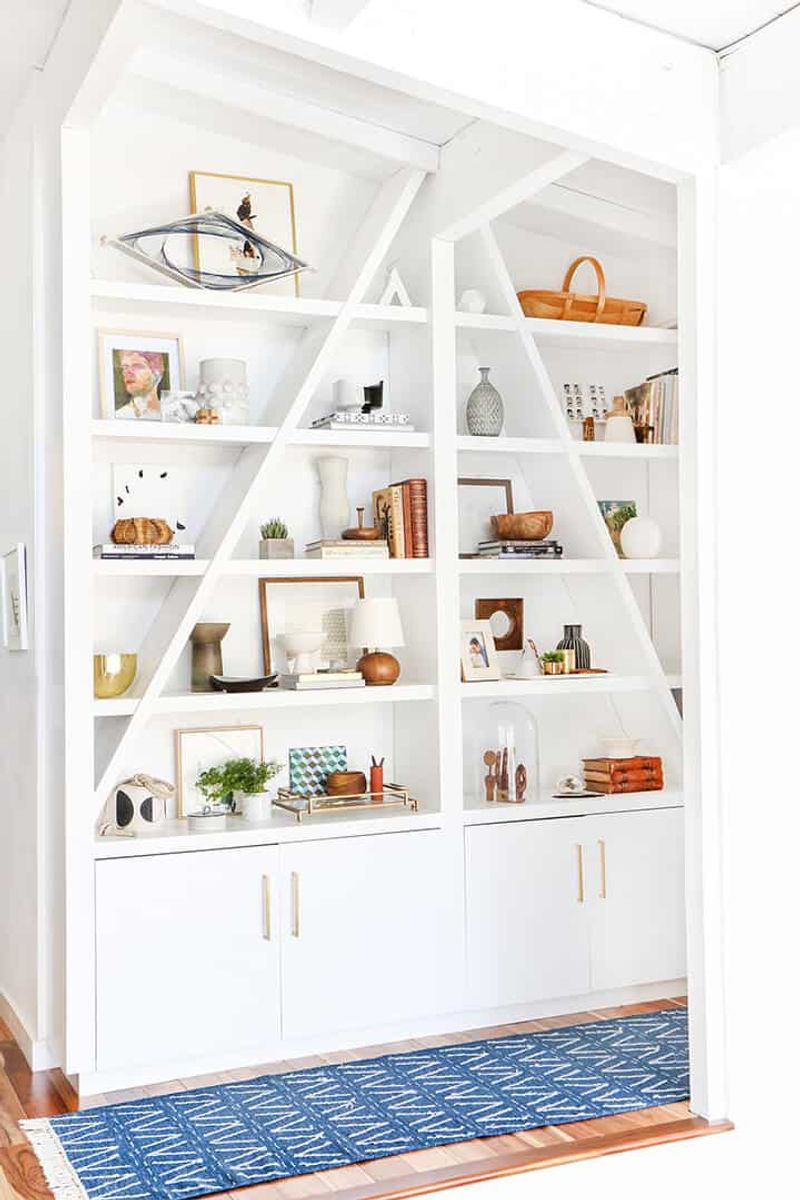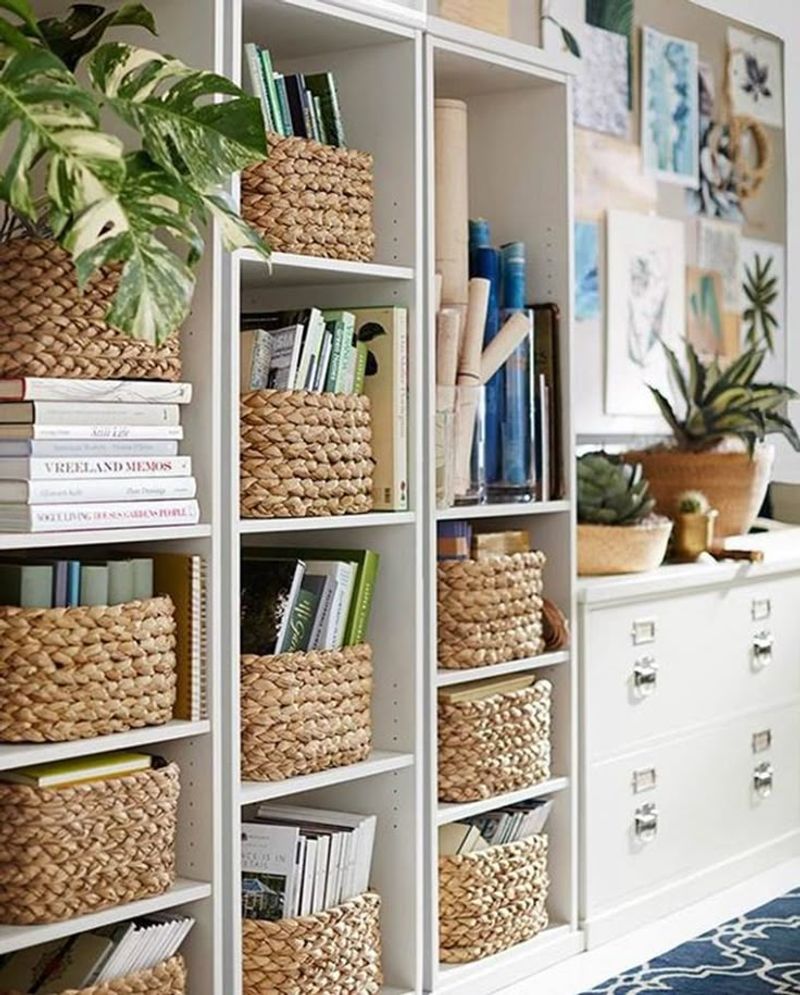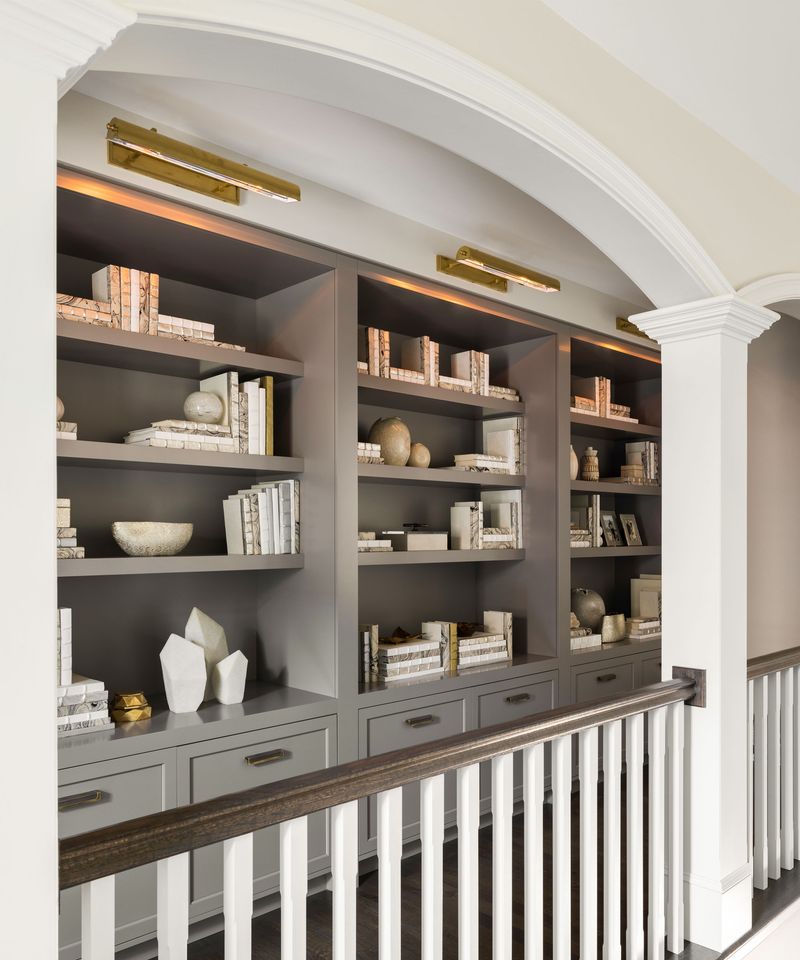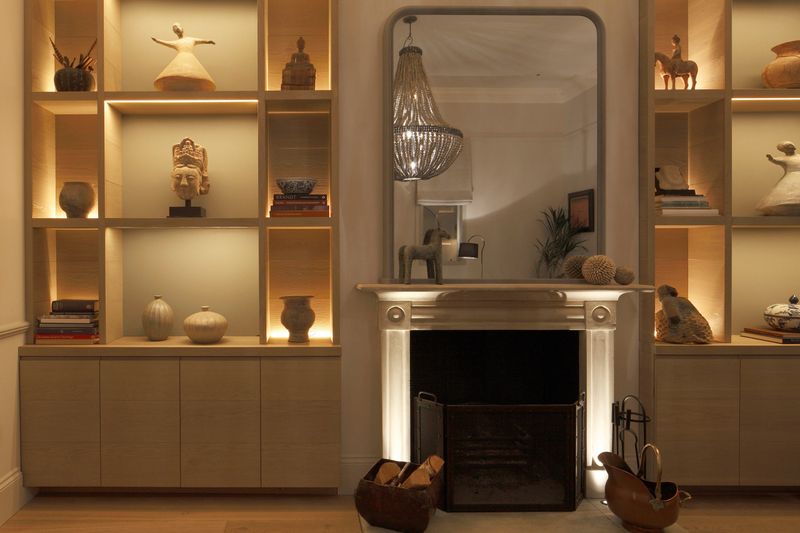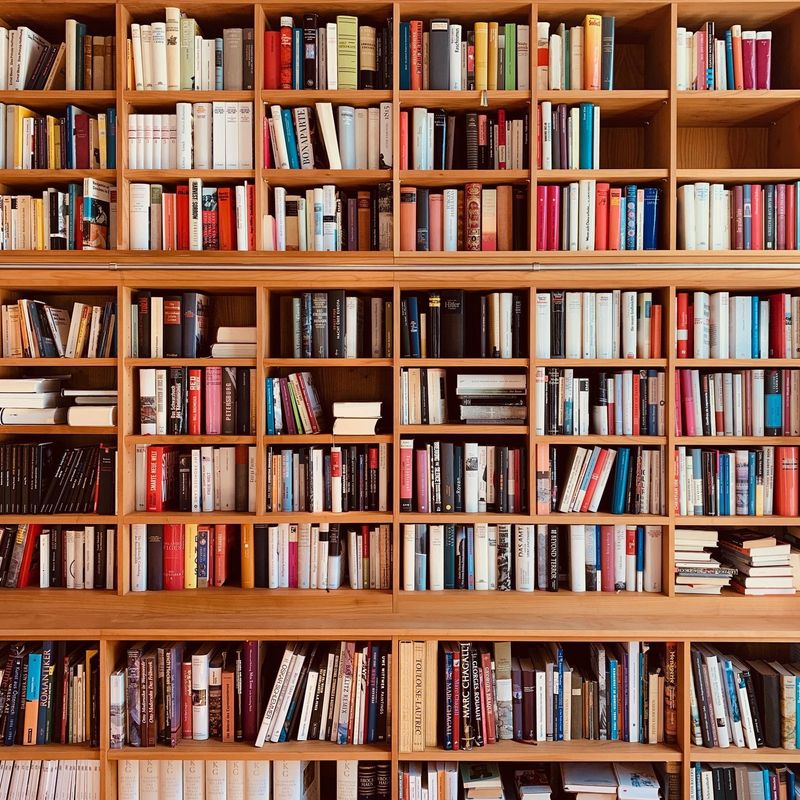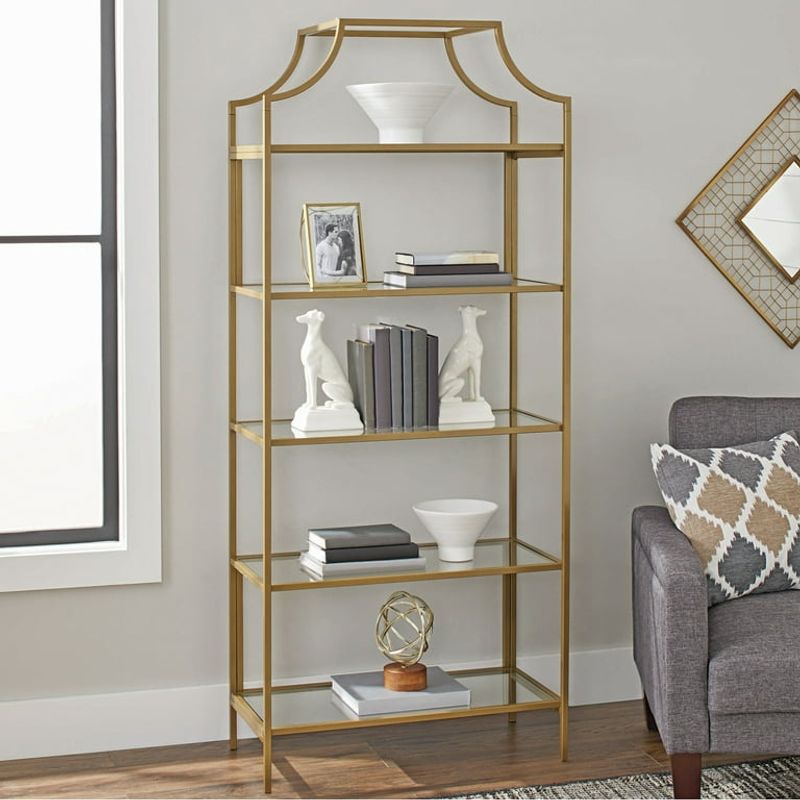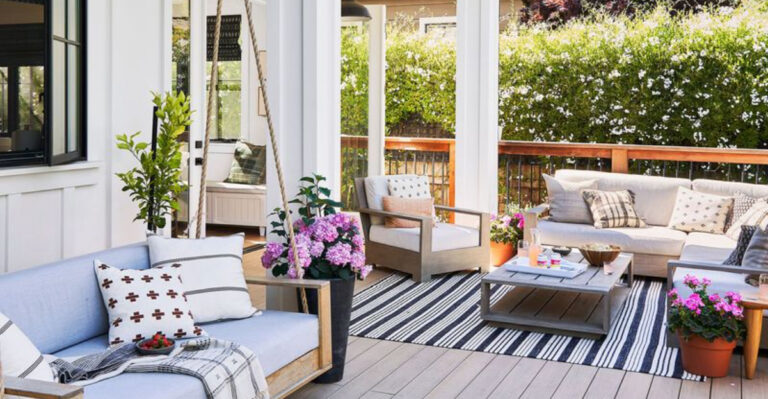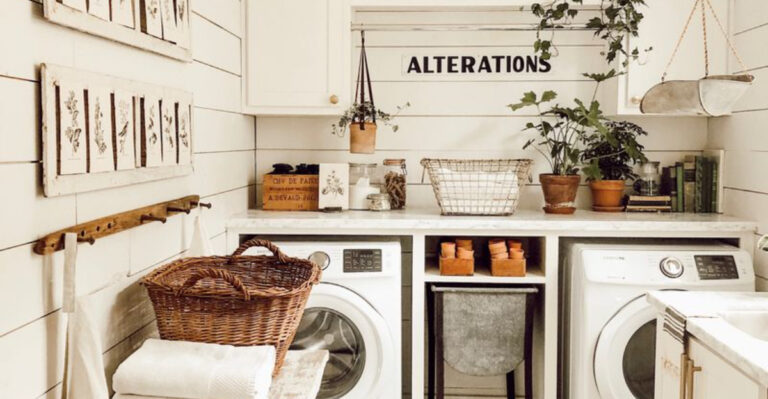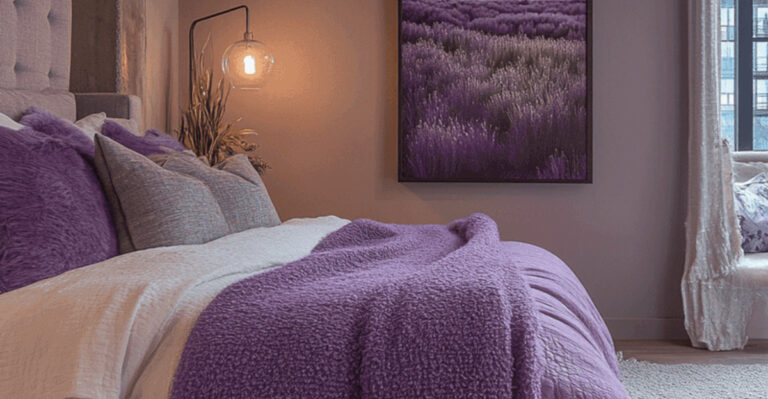18 Ways To Style Your Bookshelf Like A Designer
Bookshelves aren’t just storage – they’re an opportunity to showcase your personality and style.
With a few simple tricks, you can transform your ordinary shelves into stunning displays worthy of a design magazine.
Regardless of if you have a built-in library or a small floating shelf, these expert tips will help you create a bookshelf that looks professionally arranged while still feeling uniquely yours.
1. Color-code Your Books
Rainbow arrangements instantly catch the eye and create visual harmony. Start with reds on one end and work your way through the spectrum to purples on the other.
Not only does this method make finding books easier, but it also turns your collection into a vibrant art display. The burst of organized color can brighten any room, even on the gloomiest days.
2. Create Horizontal and Vertical Stacks
Playing with direction adds dimension to your shelves. Try alternating between upright books and horizontal stacks to break up the monotony and create visual interest.
The horizontal piles can serve as pedestals for small decorative objects. For maximum stability, place heavier books at the bottom of stacks and limit heights to 5-7 books to prevent toppling.
3. Leave Room to Breathe
Resist the urge to pack every inch! Negative space is your secret weapon for a polished look. When shelves have breathing room, each item gets proper attention.
Consider filling shelves to about 70% capacity, leaving gaps between groupings. This intentional spacing creates rhythm and allows your favorite pieces to stand out rather than competing in a cluttered jumble.
4. Incorporate Artwork and Photographs
Family snapshots and artwork deserve better than being hidden in albums! Leaning framed pieces against the back of shelves creates depth and personality.
Vary the sizes and orientations for visual interest. Black and white photos create a cohesive look, while colorful art pieces can serve as accent points. Remember to keep frames proportionate to your shelf height for balanced composition.
5. Add Natural Elements
Bringing the outdoors in creates warmth and life among your literary collection. Small potted plants, especially trailing varieties like pothos or string of pearls, add movement and soften rigid shelf lines.
Air plants require minimal care while adding interesting texture. For a longer-lasting option, consider preserved moss, driftwood pieces, or beautiful stones and crystals that complement your color scheme.
6. Showcase Collections
Have you been collecting vintage cameras or ceramic figurines? Your bookshelf is the perfect gallery! Grouping similar items creates visual impact that random placement lacks.
For maximum effect, arrange collections in odd numbers (three or five pieces work well). Varying heights within the grouping creates a more dynamic display. This approach transforms ordinary objects into conversation-starting focal points.
7. Organize by Size
Height matters when creating visually pleasing arrangements. Try arranging books from tallest to shortest within sections for a clean, organized appearance that’s pleasing to the eye.
Alternatively, create an undulating pattern that resembles rolling hills by alternating tall and short books. This approach brings movement and rhythm to your shelves while maintaining a sense of intentional organization.
8. Use Bookends as Statement Pieces
Forget boring metal supports! Sculptural bookends double as art while keeping your books upright. Look for unique materials like marble, concrete, or brass that complement your decor style.
Animal shapes, geometric forms, or vintage finds can inject personality. For an unexpected twist, try using other objects as bookends—a small potted plant or decorative box can serve the same function while adding visual interest.
9. Create Theme-Based Vignettes
Telling a story through your arrangements creates emotional connection. Group items that share a theme—perhaps travel souvenirs alongside maps and guidebooks, or vintage typewriters with classic novels.
Each shelf can represent a different interest or memory. These thoughtful groupings not only look cohesive but also showcase your personality and experiences, turning ordinary shelves into meaningful displays that invite conversation.
10. Play With Scale and Proportion
Mixing objects of different sizes creates visual intrigue that draws the eye. Pairing a tiny ceramic figurine with a substantial art book creates delightful contrast.
For balanced composition, place larger items toward the bottom shelves and lighter, smaller pieces up top. This approach not only looks intentional but also follows natural visual weight distribution, making your arrangement feel professionally designed.
11. Incorporate Decorative Boxes and Baskets
Beautiful storage solutions hide everyday clutter while adding texture and interest. Woven baskets bring warmth, while lacquered boxes add polish—both perfect for stashing items you need but don’t want visible.
Choose containers that complement your color scheme. Leave some boxes lid-free for easy access to frequently used items, and consider labeling others discreetly for a organized system that maintains your stylish aesthetic.
12. Turn Books Backward for Texture
While controversial among book lovers, this designer trick creates a neutral, cohesive look that lets other elements shine. The pages’ cream color and textural edges provide a soft background for more colorful accents.
Try this approach with just a few books rather than your entire collection. It works particularly well with paperbacks whose spines might be visually distracting or with books whose colors clash with your decor scheme.
13. Create a Color Story
Unlike rainbow arrangements, a curated color palette feels sophisticated and intentional. Select 2-3 complementary colors that match your room’s scheme and group books and objects in these hues.
Navy, white, and brass make a classic combination, while blush, gray, and gold create a modern feel. This approach transforms your bookshelf into a cohesive design element rather than a random collection of items.
14. Incorporate Lighting Elements
Illumination transforms ordinary shelves into dramatic focal points. Small battery-operated picture lights highlight special collections, while string lights add whimsical ambiance after dark.
Consider LED strip lighting installed under shelves for a professional gallery effect. The warm glow not only showcases your treasures but also adds another dimension to your room’s lighting scheme, creating inviting nooks even in larger spaces.
15. Maintain Visual Balance
Harmony doesn’t require perfect symmetry! Instead, aim for balanced visual weight across your shelves. If one section contains a large, dark object, balance it with something similarly substantial elsewhere.
Think of each shelf as a seesaw that should remain relatively level. Distribute colors, textures, and shapes evenly throughout the entire unit. This approach creates a sense of intentional organization that looks professionally designed.
16. Create a Focal Point
Every well-designed shelf needs a star! Designate one special object as your focal point—perhaps a striking sculpture, unique vintage find, or meaningful family heirloom.
Position this piece at eye level and give it breathing room. Arrange other items to subtly lead the eye toward this focal point. This technique creates a hierarchy of visual interest that guides viewers through your display.
17. Style by Genre or Subject
Book lovers can appreciate this practical yet aesthetic approach. Grouping books by subject creates intuitive organization while maintaining a curated look.
Cooking books with a small whisk as an accent, travel guides with a miniature globe, or gardening books with a tiny plant create charming themed sections. This method not only looks intentional but also makes finding specific books much easier.
18. Incorporate Metallic Accents
A touch of shine elevates any shelf arrangement from ordinary to luxurious. Brass animals, silver frames, or copper bookends add sophisticated gleam that catches light and draws attention.
Mix metal finishes for an eclectic, collected-over-time feel, or stick to one metallic tone for more formal elegance. These reflective surfaces create contrast against matte book covers and add dimension to your display.

